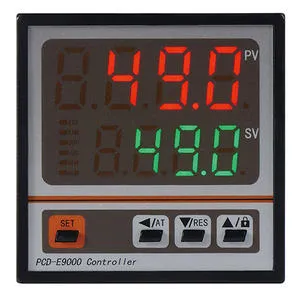With the continuous development of science and technology, intelligence has become a trend in various fields. In both domestic life and industrial environments, it is often difficult to master the control of the ambient temperature, so labor-intensive constant setting and adjustment of the temperature becomes a troublesome problem. In order to solve this problem, intelligent temperature controllers came into being.

An intelligent temperature controller is a professional device that can automatically adjust the temperature of an indoor or industrial environment. Its main function is to automatically adjust the temperature of the indoor or industrial environment by controlling the switching of heating, cooling, ventilation and other equipment, so as to achieve the purpose of saving energy, improving production efficiency and creating a comfortable living and working environment.
The advantages of smart temperature controllers are many. First of all, compared with traditional temperature control methods, the operation is simpler. The user only needs to install and set the appropriate initial value and target value, and the intelligent temperature controller can operate automatically, thereby reducing the waste of manpower and time.
Secondly, intelligent temperature controller can achieve more precise temperature control effect. Because it has modern high-tech digital control technology, it can accurately judge the ambient temperature, and obtain accurate control information through the calculation of the program algorithm to achieve more accurate temperature adjustment.
The most important thing is that the intelligent temperature controller can realize automatic control, which solves the shortage of artificial temperature control to a large extent, and completes intelligent and automatic control.
Matters needing attention when installing a smart temperature controller. First of all, it is necessary to confirm the reliability and efficiency of the equipment. The use of high-quality equipment can improve the performance and durability of the equipment and reduce the occurrence of failures. Secondly, the controller should be selected according to the actual needs of industry or family, so as to achieve reasonable energy saving and cost saving purposes. In addition, install the equipment according to the installation requirements, select the sensors correctly and connect them correctly, test the reliability and sensitivity of the sensors, and operate in strict accordance with the installation specifications. In this way, the normal operation and service life of the intelligent temperature controller can be ensured.
In short, the emergence of intelligent temperature controllers meets the needs of automatic regulation of ambient temperature, making industrial production and family life more comfortable and efficient. With the development of technology, the functions and application fields of intelligent temperature controllers will gradually expand and improve.